
BEETS: THE UNDERDOG OF THE UNDERWORLD
03/12/21 — Ada Broussard
Beets. They can feel divisive, at times. For the farm, they’re a wonderful storage crop that is relatively easy to grow. They have a long growing season and do well in spring, winter, and fall.
We consider these sweet and starchy roots a wonderful staple that can work their way into dishes both sweet and savory. They’re dense, and like a potato, can serve as a meal’s foundation, an anchor vegetable to which herbs, sauces, and cheese are sprinkled. But we’re farmers, and we were born to love each and every one of our vegetables, equally. We adore beets, but know that some of you are experiencing a case of beet-fatigue. We hope this week’s blog post will help solve your woes, and that the beets bouncing around the bottom of your CSA box will delight you.
![]()
VARIETIES & COLOR
Beets are in a group of plants commonly referred to as the “goosefoot” family. They share this distinction with crops like chard, amaranth, spinach, and even quinoa, and are nicknamed as such because the leaves are said to resemble goose feet. You be the judge. Here at JBG, we grow three types of beets: red beets, golden beets, and the candy cane striped Chioga beets. Deep scarlet red beets get their rich hues from very special pigments, called betalains, which are unlike the color-causing molecules in most plants. Evolutionarily, these pigments are different from what makes a tomato or bell pepper red, and leave scientists scratching their heads as to why, exactly, beets are so richly red. Fun fact: check the label on red food products like tomato paste, jams, jellies, and even strawberry ice cream. Most of these commercially-produced products rely on beet’s betalains to achieve a dark red or pink hue.
![]() A 365 day project of unique panorama photos by Austin photographer Scott David Gordon
A 365 day project of unique panorama photos by Austin photographer Scott David Gordon
Another interesting feature of beets are the rings which you can see when slicing through the bulb. The darkest rings are the vascular tissue of the beets - structures called xylem and phloem. Xylem is responsible for transporting water and nutrients from the soil into the beet, and phloem is responsible for carrying sugars from the leaves. The lighter rings visible in beets are simply storage tissues, and in the case of beets, they’re storing lots of sugar. Beets are one of the sweetest vegetables around, and there is even a type of beet called a sugar beet that is grown specifically to produce sugar. In fact, over half of the world’s refined sugar is made from beets!
NUTRITION
When beets were first domesticated, the leaves were consumed for food, and the roots as medicine. Which makes sense, because beetroots are just zinging with nutrition. Beetroots have an impressive amount of vitamins and minerals. A single serving of beets contains a healthy dose (2 grams) of fiber as well as Vitamin C, B6, Folate, Magnesium, Potassium, Phosphorous, Manganese, and Iron. Nutrition experts claim beets can help reduce blood pressure, improve athletic performance, fight inflammation, improve digestive health, support brain health, and so much more.
RECIPES
Beets are often described as “earthy” tasting which can be attributed to a compound called geosmin (which means “dirt smell”). For some, this dirt-taste is a delicasey. For others, it can be off-putting. In her article “The Beet Goes On”, botanist Katherine Preston, PhD, poses a good question: “There are many scents and flavors that attract or repel, depending on their context. Parmesan cheese smells like vomit, white pepper smells like wet dog, and expensive Italian truffles smell like feet. Geosmin flavor in water or wine is off-putting because it indicates contamination (harmless as it may be), but we love it after a gentle rain because it belongs there. Beet lovers welcome geosmin as a normal flavor component of beets. Do beet haters, by contrast, attribute it to something unhealthy?”
Below are some recipes, both in and out of the box, to help you adore your beets.
![]()
Beet Hummus: Beets can make a wonderful anchor to an entire meal, but they can also be foundational as a snack. Enter: beet hummus. There are a dozen ways to blitz roasted beets and make the vegetable into a dippable, spreadable snack. Optional ingredients include things like yogurt, tahini, chickpeas, and herbs.
Beet Chips: Since we’re on the snack train, why not make chips out of your beets, and then use these as vessels for regular-hummus? Or dip beet chips in beet-hummus if you’re looking for full immersion.
![]()
Beet Kvas:
Beet Kvas is an easy-to make fermented beet beverage. This salty, sour, and sweet beverage is perfect on its own, taken as a post-workout shot, mixed into a cocktail, or even stirred with sparkling water. If you’re looking for a quick, no-frills recipe to use those beets, look no further.
Beet Ketchup A bounty of beets can be preserved in the form of ketchup - a perfectly dippy alternative to tomato-ketchup, there to tide you over as you anxiously await the summer fruit.
![]()
Chocolate Beet Cupcakes Just trust us. You’ll never look back.
![]()
Beet Salad There are endless options that play off the classic combination of roasted beets, a tangy cheese, good olive oil and herbs. This version includes citrus. Additions like fennel, onions, herbs, nuts, and cooked grains are all wonderful ways to build a salad around roasted beets.
![]() All Rights Reserved
All Rights Reserved
Fried Beets This recipe is really a story about a fried-beet-failure, but the story includes links to actual fried beet recipes. Breaded and fried beets + creamy dip = heavily snack even for the most skeptical consumer.
For more beet recipes, checkout our recipe archive. And don’t forget about the leaves!
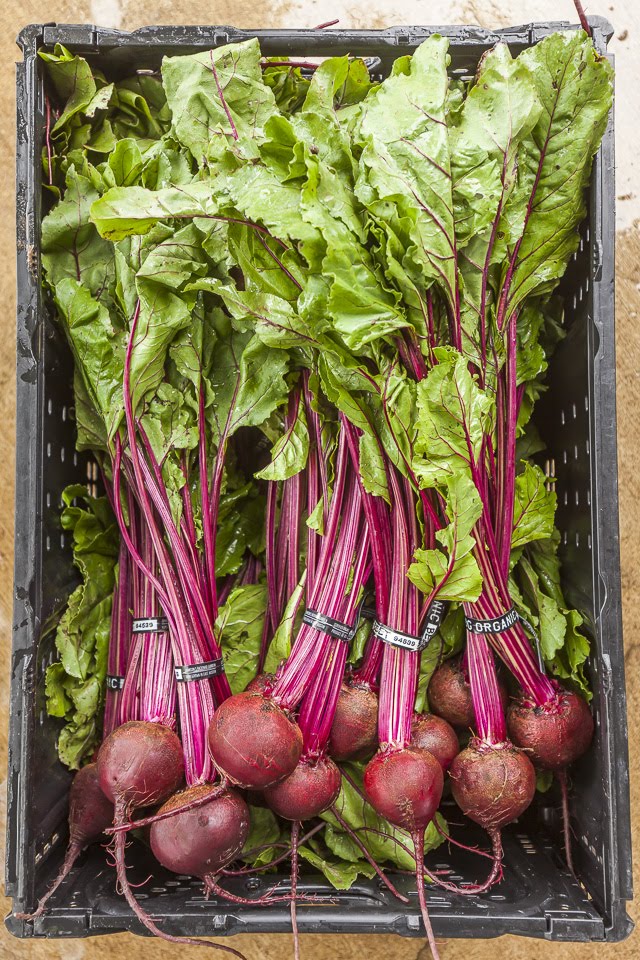
VARIETIES & COLOR
Beets are in a group of plants commonly referred to as the “goosefoot” family. They share this distinction with crops like chard, amaranth, spinach, and even quinoa, and are nicknamed as such because the leaves are said to resemble goose feet. You be the judge. Here at JBG, we grow three types of beets: red beets, golden beets, and the candy cane striped Chioga beets. Deep scarlet red beets get their rich hues from very special pigments, called betalains, which are unlike the color-causing molecules in most plants. Evolutionarily, these pigments are different from what makes a tomato or bell pepper red, and leave scientists scratching their heads as to why, exactly, beets are so richly red. Fun fact: check the label on red food products like tomato paste, jams, jellies, and even strawberry ice cream. Most of these commercially-produced products rely on beet’s betalains to achieve a dark red or pink hue.
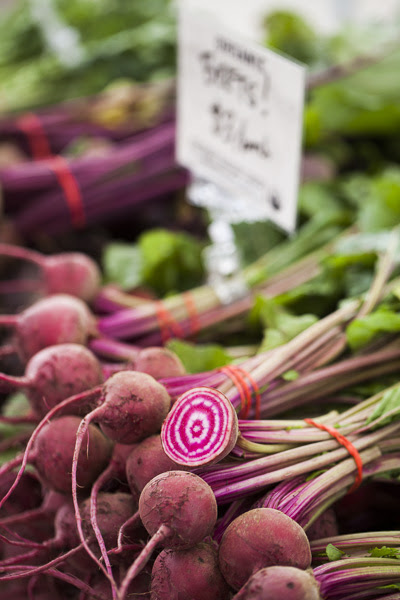 A 365 day project of unique panorama photos by Austin photographer Scott David Gordon
A 365 day project of unique panorama photos by Austin photographer Scott David Gordon
Another interesting feature of beets are the rings which you can see when slicing through the bulb. The darkest rings are the vascular tissue of the beets - structures called xylem and phloem. Xylem is responsible for transporting water and nutrients from the soil into the beet, and phloem is responsible for carrying sugars from the leaves. The lighter rings visible in beets are simply storage tissues, and in the case of beets, they’re storing lots of sugar. Beets are one of the sweetest vegetables around, and there is even a type of beet called a sugar beet that is grown specifically to produce sugar. In fact, over half of the world’s refined sugar is made from beets!
NUTRITION
When beets were first domesticated, the leaves were consumed for food, and the roots as medicine. Which makes sense, because beetroots are just zinging with nutrition. Beetroots have an impressive amount of vitamins and minerals. A single serving of beets contains a healthy dose (2 grams) of fiber as well as Vitamin C, B6, Folate, Magnesium, Potassium, Phosphorous, Manganese, and Iron. Nutrition experts claim beets can help reduce blood pressure, improve athletic performance, fight inflammation, improve digestive health, support brain health, and so much more.
RECIPES
Beets are often described as “earthy” tasting which can be attributed to a compound called geosmin (which means “dirt smell”). For some, this dirt-taste is a delicasey. For others, it can be off-putting. In her article “The Beet Goes On”, botanist Katherine Preston, PhD, poses a good question: “There are many scents and flavors that attract or repel, depending on their context. Parmesan cheese smells like vomit, white pepper smells like wet dog, and expensive Italian truffles smell like feet. Geosmin flavor in water or wine is off-putting because it indicates contamination (harmless as it may be), but we love it after a gentle rain because it belongs there. Beet lovers welcome geosmin as a normal flavor component of beets. Do beet haters, by contrast, attribute it to something unhealthy?”
Below are some recipes, both in and out of the box, to help you adore your beets.
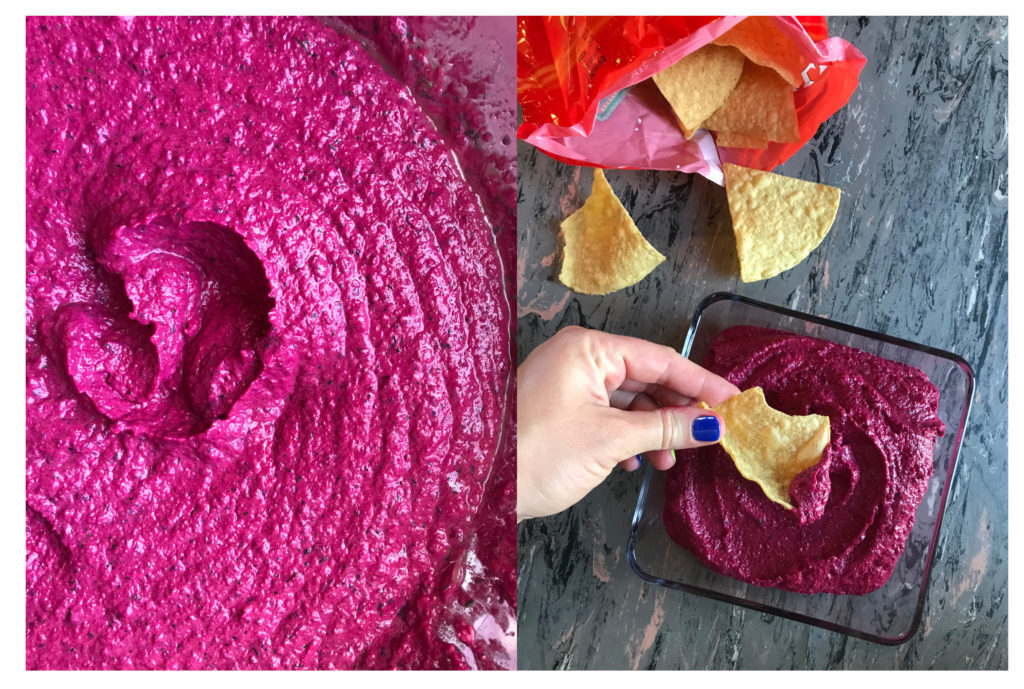
Beet Hummus: Beets can make a wonderful anchor to an entire meal, but they can also be foundational as a snack. Enter: beet hummus. There are a dozen ways to blitz roasted beets and make the vegetable into a dippable, spreadable snack. Optional ingredients include things like yogurt, tahini, chickpeas, and herbs.
Beet Chips: Since we’re on the snack train, why not make chips out of your beets, and then use these as vessels for regular-hummus? Or dip beet chips in beet-hummus if you’re looking for full immersion.
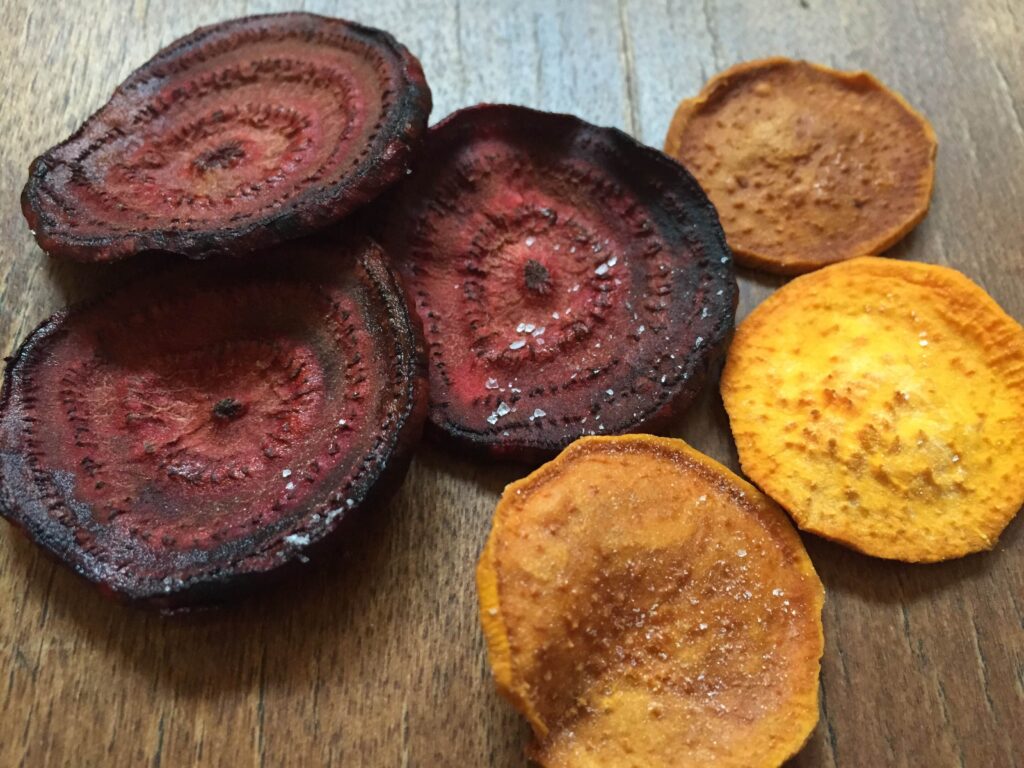
Beet Kvas:
Beet Kvas is an easy-to make fermented beet beverage. This salty, sour, and sweet beverage is perfect on its own, taken as a post-workout shot, mixed into a cocktail, or even stirred with sparkling water. If you’re looking for a quick, no-frills recipe to use those beets, look no further.
Beet Ketchup A bounty of beets can be preserved in the form of ketchup - a perfectly dippy alternative to tomato-ketchup, there to tide you over as you anxiously await the summer fruit.
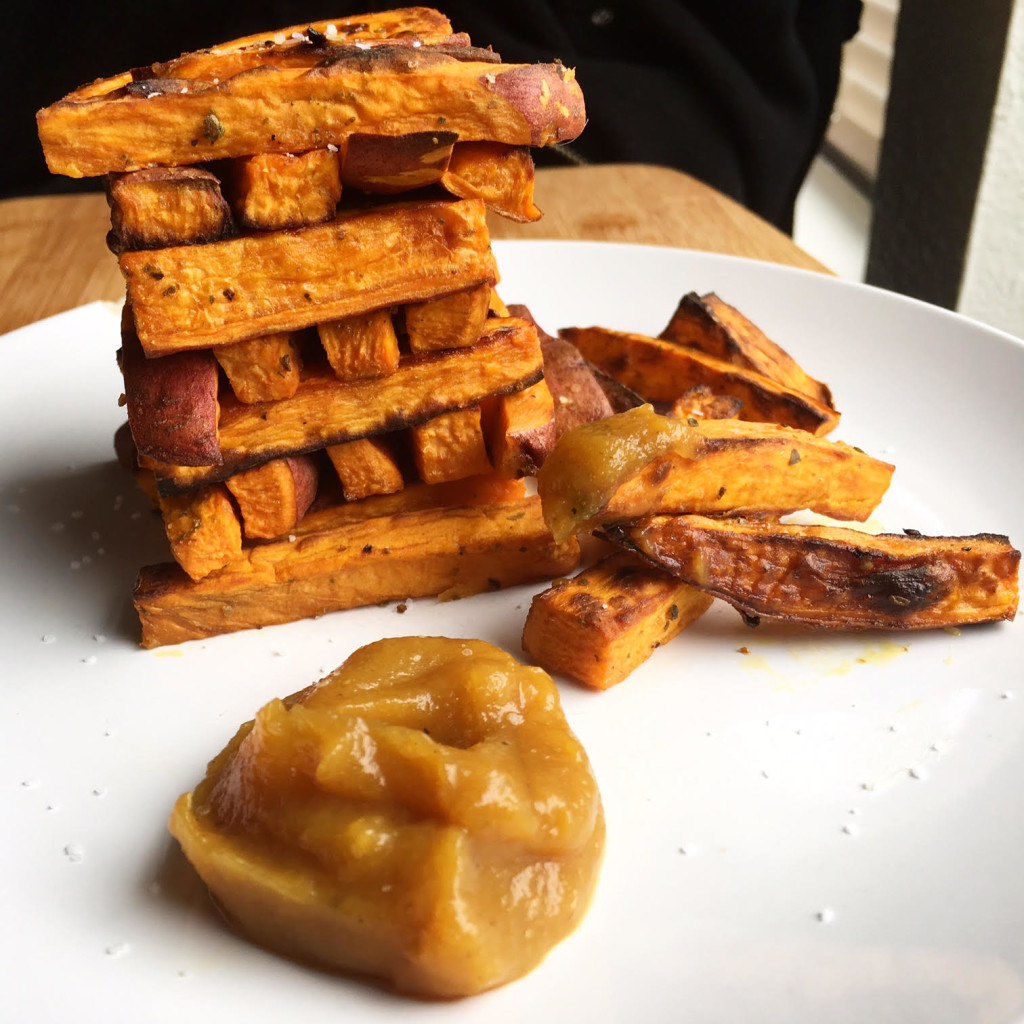
Chocolate Beet Cupcakes Just trust us. You’ll never look back.

Beet Salad There are endless options that play off the classic combination of roasted beets, a tangy cheese, good olive oil and herbs. This version includes citrus. Additions like fennel, onions, herbs, nuts, and cooked grains are all wonderful ways to build a salad around roasted beets.
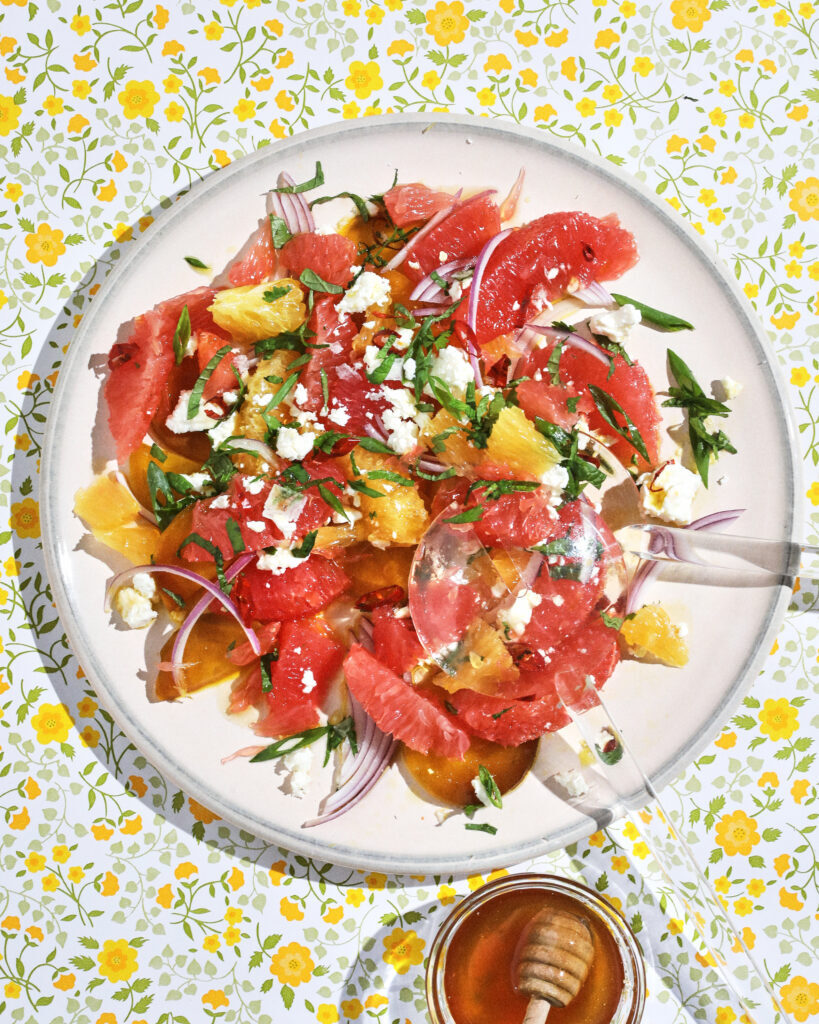 All Rights Reserved
All Rights Reserved
Fried Beets This recipe is really a story about a fried-beet-failure, but the story includes links to actual fried beet recipes. Breaded and fried beets + creamy dip = heavily snack even for the most skeptical consumer.
For more beet recipes, checkout our recipe archive. And don’t forget about the leaves!






 0 ITEMS IN CART
0 ITEMS IN CART 

